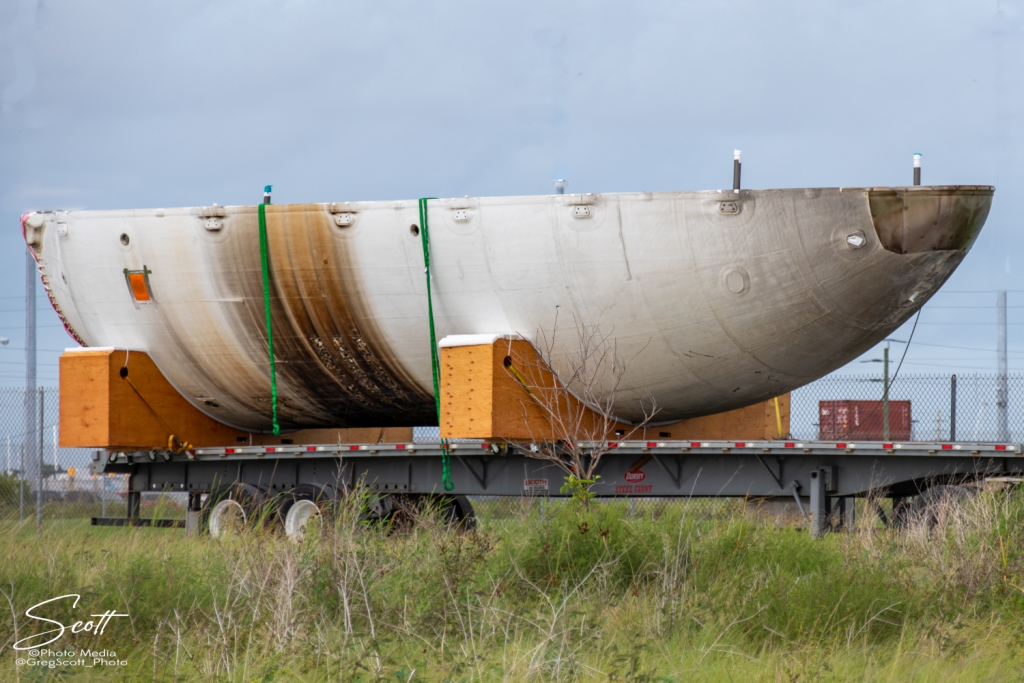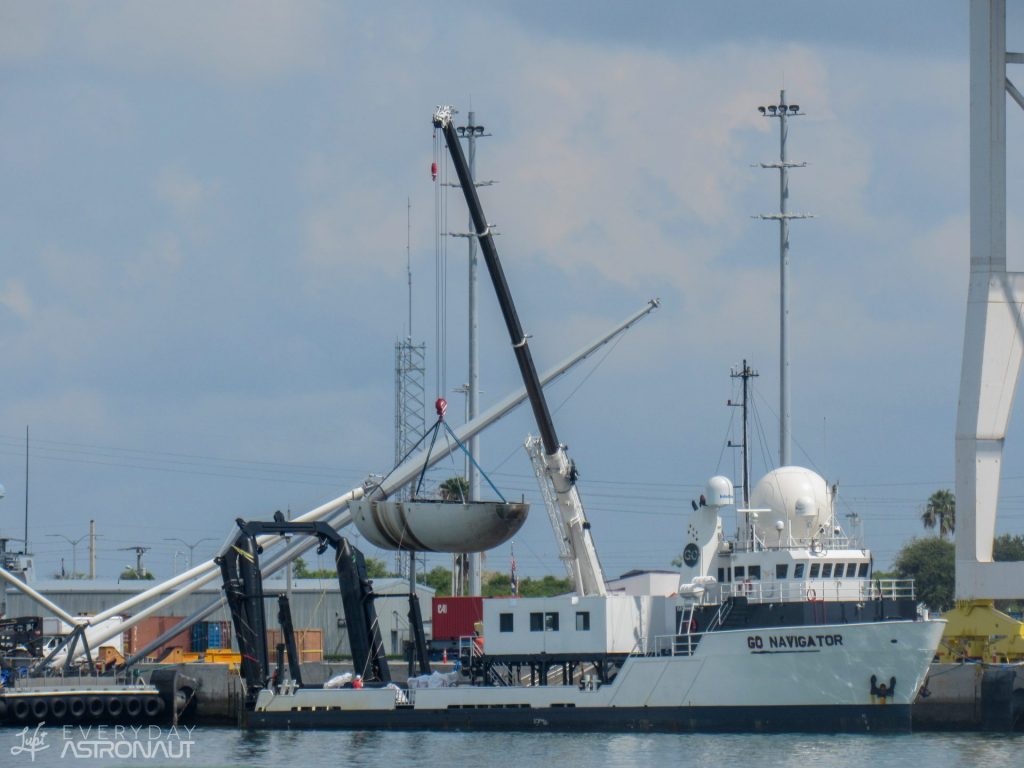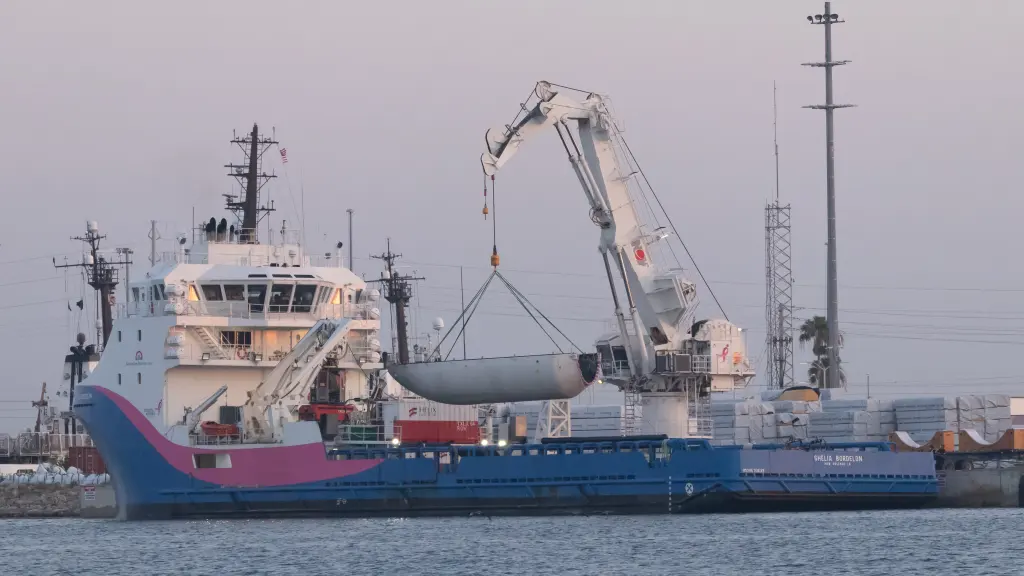Featured image credit: SpaceX
Lift Off Time | January 18, 2023 – 12:24 UTC | 07:24 EST |
|---|---|
Mission Name | GPS III Space Vehicle 06, the 6th GPS block III satellite, named Amelia Earhart |
Launch Provider | SpaceX |
Customer | United States Space Force |
Rocket | Falcon 9 Block 5 B1077-2; 104.85 day turn around |
Launch Location | Space Launch Complex 40 (SLC-40), Cape Canaveral Space Force Station, Florida, USA; 8.31 day turnaround |
Payload mass | ~4,300 kg (~9,500 lb) |
Where did the satellite go? | 20,180 x 20,180 km medium-Earth orbit |
Did they attempt to recover the first stage? | Yes |
Where did the first stage land? | ~647 km downrange on A Shortfall of Gravitas Tug: Doug; Support: Doug |
Did they attempt to recover the fairings? | The fairing halves will be recovered from the water ~673 km downrange by Doug |
Were the fairings new? | Yes |
This was the: | – 197th Falcon 9 launch – 133rd Falcon 9 flight with a flight-proven booster – 139th re-flight of a booster – 5th re-flight of a booster in 2023 – 166th booster landing – 91st consecutive landing (a record) – 4th launch for SpaceX in 2023 – 110th SpaceX launch from SLC-40 – 11th orbital launch attempt of 2023 |
Where to watch | Official Livestream |
How Did It All Go?
SpaceX successfully launched the GPS III SV06 mission to a medium-Earth orbit aboard a Falcon 9 for the United States Space Force. The Falcon 9 lifted off from Space Launch Complex 40 (SLC-40), at the Cape Canaveral Space Force Station, in Florida, USA. As the name implies, this launch marked the sixth launch of a GPS block III satellite to date. Like all GPS Block III satellites, the satellite is nicknamed after a historically significant figure; in this case Amelia Earhart.
What Is The GPS Constellation?
GPS, or Global Positioning System, is a medium-Earth orbit satellite constellation operated by the United States Space Force. It is America’s global navigation satellite system (GNNS), providing geolocation and time coverage around the world; Russia uses its own GLONASS for GNNS and the European Union uses Galileo. Currently, there are 31 active GPS satellites in orbit, with roughly two dozen more satellites planned.

Active GPS Satellites:
Out of the 31 active satellites in orbit, there are four different versions using two different blocks. The block of a GPS satellite is given by the Roman numerals in its name and the version is given by the letter listed after the Roman numerals. The newest satellites in the constellation are the five (soon to be six) block III satellites. The first block III satellite was launched on a Falcon 9 in 2018, with other launches occurring in 2019, 2020, and 2021. There are also 12 operational GPS Block IIFs, which were launched from 2010 to 2016. Next, seven operational GPS Block IIR-Ms were launched from 2005-2009. Finally, there are seven operational Block IIRs, launched between 1997 and 2004. Through the progression of these blocks, the Space Force has increased satellite lifespan, increased the precision and accuracy of both position and time, and made the constellation significantly harder to jam.
For the civilian population, GPS provides an impressive 30 to 500 cm of accuracy, with even higher accuracy for the United States Department of Defense. This is especially impressive as each satellite is in a circular orbit with an orbital height of 20,180 km.
What Is GPS Block III?
GPS Block III is the third major iteration of the GPS satellite and is designed and manufactured by Lockheed Martin. Each satellite is designed to have a 15-year lifespan; however, based on previous blocks lasting over twice as long as their planned lifespan, each satellite will likely last longer. The goal of GPS Block III was to provide enhanced signal reliability, accuracy, and integrity. The satellites will build upon or improve features included on the Block IIR-M and IIF satellites including:
- L1C signal on the 1575.42 MHz L1 frequency
- L2C signal on the 1227.6 MHz L2 frequency
- L5 “Safety of Life” signal on the 1176.45 MHz L5 frequency
- Military M-code
The first satellite was supposed to launch in 2014 but experienced several delays pushing the first launch back to December 2018.
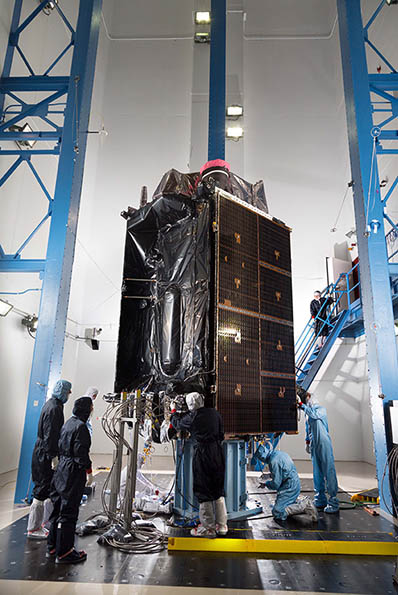
What Is Falcon 9 Block 5?
The Falcon 9 Block 5 is SpaceX’s partially reusable two-stage medium-lift launch vehicle. The vehicle consists of a reusable first stage, an expendable second stage, and, when in payload configuration, a pair of reusable fairing halves.
First Stage
The Falcon 9 first stage contains nine Merlin 1D+ sea-level engines. Each engine uses an open gas generator cycle and runs on RP-1 and liquid oxygen (LOx). Each engine produces 845 kN of thrust at sea level, with a specific impulse (ISP) of 285 seconds, and 934 kN in a vacuum with an ISP of 313 seconds. Due to the powerful nature of the engine, and the large amount of them, the Falcon 9 first stage is able to lose an engine right off the pad, or up to two later in flight, and be able to successfully place the payload into orbit.
The Merlin engines are ignited by TEA-TEB (triethylaluminum and triethylboron). During static fire and launch the TEA-TEB is provided by the ground service equipment. However, as the Falcon 9 first stage is able to propulsively land three of the Merlin engines (E1, E5, and E9) contain TEA-TEB canisters to relight for the boost back, reentry, and landing burns.
Second Stage
The Falcon 9 second stage is the only expendable part of the Falcon 9. It contains a singular MVacD engine that produces 992 kN of thrust and an ISP of 348 seconds. The second stage is capable of doing several burns, allowing the Falcon 9 to put payloads in several different orbits.
For missions with many burns and/or long coasts between burns, the second stage is able to be equipped with a mission extension package. When the second stage has this package it has a grey strip, which helps keep the RP-1 warm, an increased number of COPVs for pressurization control, and additional TEA-TEB.
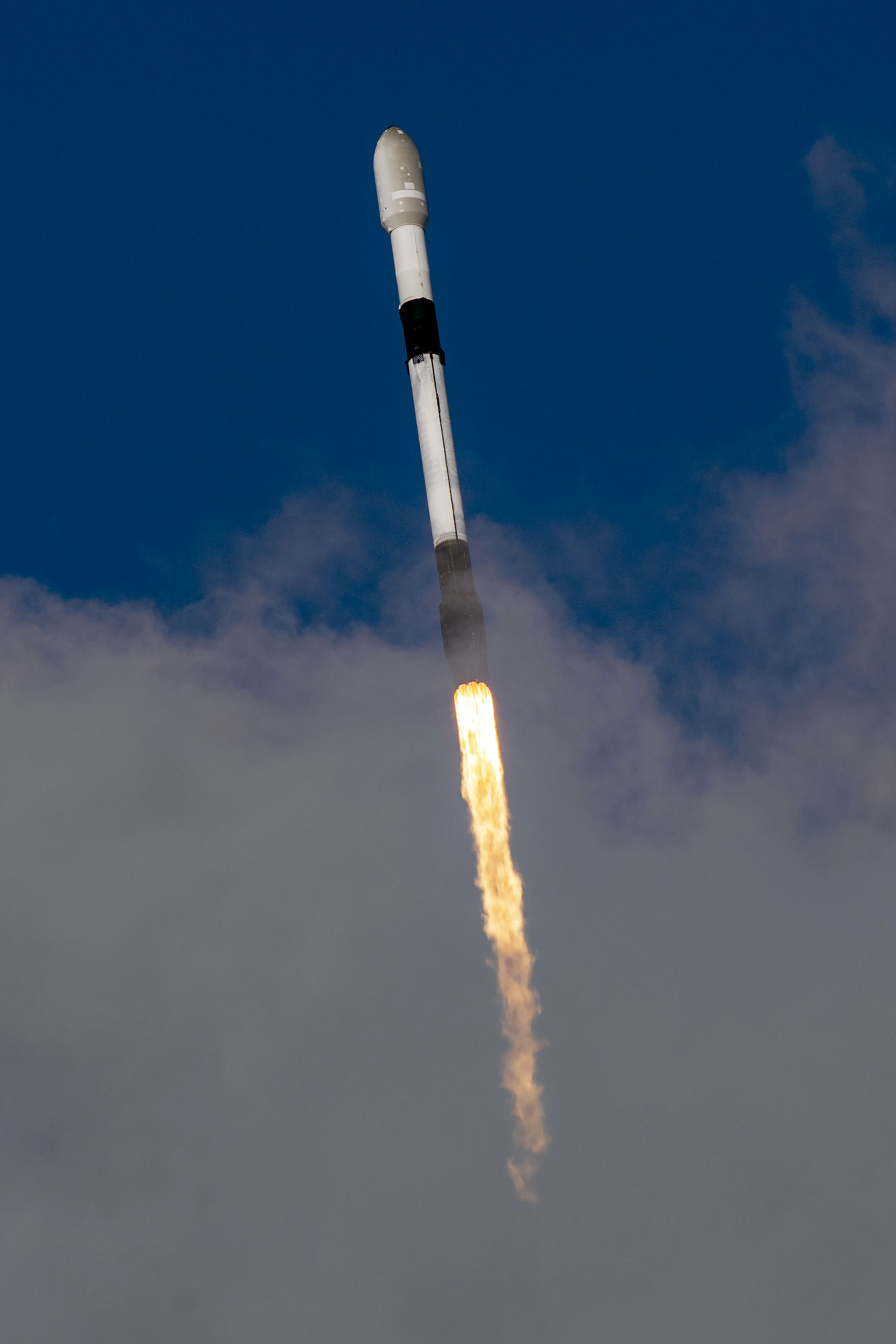
Falcon 9 Booster B1077
The booster that supported the GPS III SV06 mission was B1077, which previously supported the United States Crew Vehicle 5 mission, which launched on October 5, 2022.
Following stage separation, Falcon 9 conducted two burns. These burns softly touched down the booster on SpaceX’s autonomous spaceport drone ship A Shortfall of Gravitas.
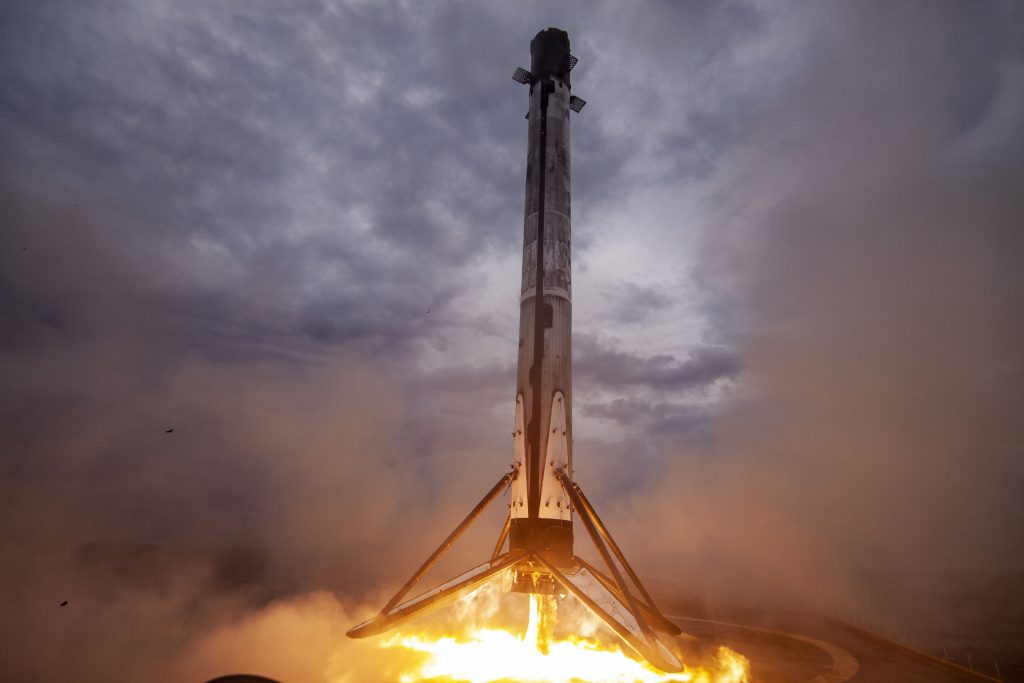
Falcon 9 Fairings
The Falcon 9’s fairing consists of two dissimilar reusable halves. The first half (the half that faces away from the transport erector) is called the active half, and houses the pneumatics for the separation system. The other fairing half is called the passive half. As the name implies, this half plays a purely passive role in the fairing separation process, as it relies on the pneumatics from the active half.
Both fairing halves are equipped with cold gas thrusters and a parafoil which are used to softly touch down the fairing half in the ocean. SpaceX used to attempt to catch the fairing halves in nets on GO Ms. Tree and GO Ms. Chief. However, at the end of 2020 this program was canceled due to safety risks and a low success rate. On GPS III SV06, SpaceX attempted to recover both of the fairing halves from the water with their recovery vessel Doug.
SpaceX is currently flying two slightly different versions of the Falcon 9 fairing. The new “upgraded” version has vents only at the top of each fairing half, by the gap between the halves, whereas the old version had vents placed spread equidistantly around the base of the fairing. Moving the vents decreases the chance of water getting into the fairing, making the chance of a successful scoop significantly higher.
